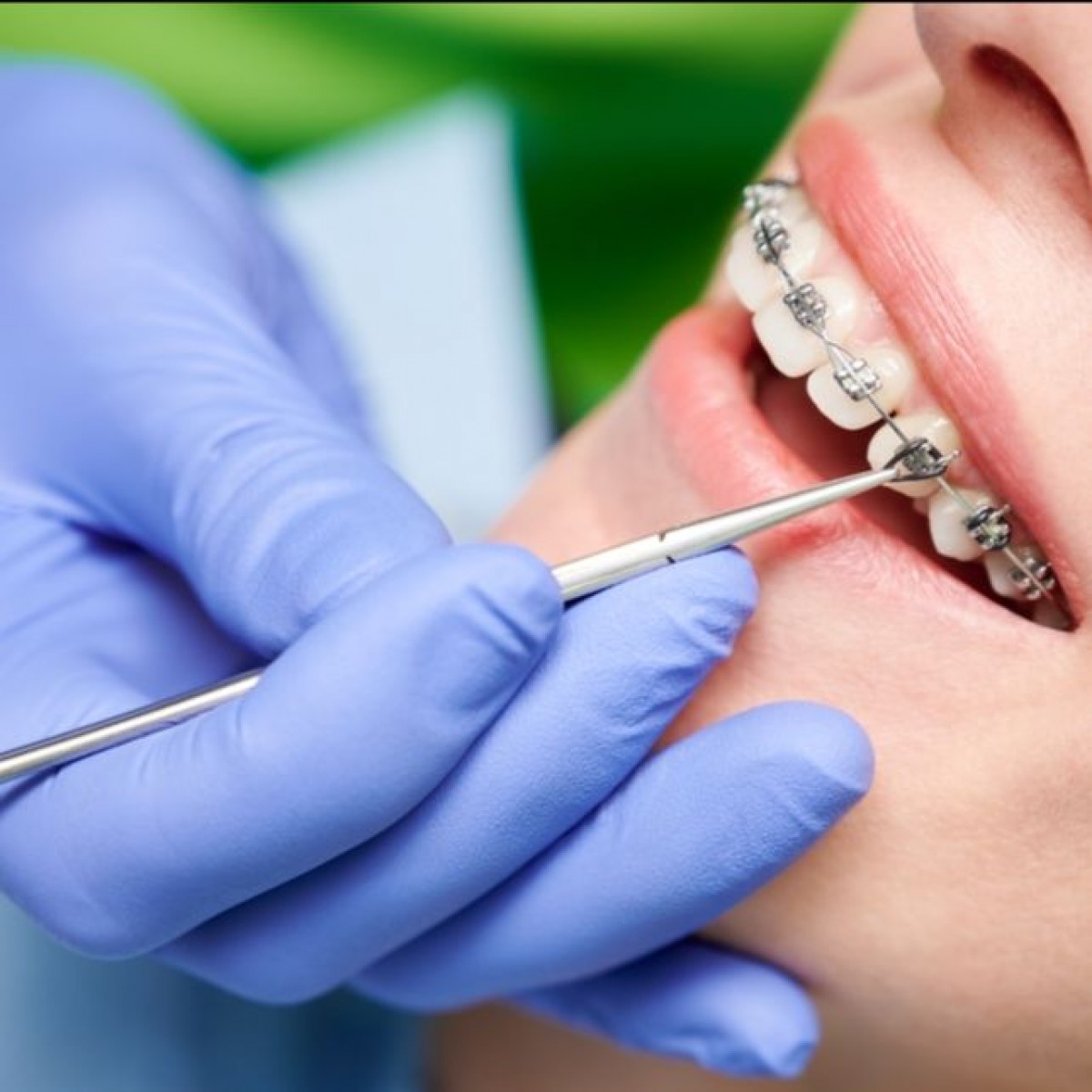
5 Myths Orthodontists Want You to Reconsider
Think you’re too old to see the orthodontist? Or that you can’t afford to take your child in for care? It’s time to reconsider.
Klint Butler, DDS, MS, is an assistant professor and director of clinical operations in the Orthodontic Graduate Program at the University of Colorado School of Dental Medicine. He believes it’s important to know the facts about how orthodontic care can improve overall health.
Myth 1: Braces are for teenagers.
Anyone age seven and up can benefit from seeing an orthodontist.
Butler said it’s important for kids to be seen as they transition from baby to permanent teeth. This allows the orthodontist to address problems early on.
“We can start to guide and correct the problem while they’re growing and developing. It may have nothing to do with moving the teeth initially. But we can start creating more harmony with the jaws during the growth phases.”
This makes any treatment needed in their teens simpler and more effective. It can also prevent major problems, such as impacted teeth or tooth damage.
Myth 2: Adults don’t need to go to the orthodontist.
Butler said it’s never too late, and that anyone at any age can benefit from an orthodontic consultation.
“We have an 82-year-old in the clinic right now who’s doing Invisalign and is happy as a lark," he said. "Their lower teeth are pretty crooked, which makes it harder to clean and floss to keep things healthy.”
Butler cautions that as you age, it’s important to work with a team who can care for all aspects of your oral health. Working with a board-certified orthodontist can help manage that care. The orthodontist can identify and help coordinate additional dental needs with the appropriate providers or specialists to achieve a superior result.
Myth 3: Orthodontic care is purely cosmetic.
Addressing problems with misalignment early can prevent extensive restorative care later.
“Obviously, there’s the cosmetic piece,” Butler said, describing a study that people with straight teeth are more likely to be offered a job. But straight teeth aren’t just about looks. It’s about putting the teeth in the proper position in the jaw and ensuring they align.
“Teeth are meant to fit together in a certain way. When they are in harmony, they complement each other through all the movements—chewing, speech and even swallowing.”
The CU Dental Orthodontic Clinic recently worked with a 44-year-old woman who was having trouble with food getting trapped under a crown, which hadn’t previously been an issue. Her dentist offered to replace the crown but noticed that her bite may have caused shifting of her teeth, resulting in space around the crown. The dentist referred her for an orthodontic consult, which revealed an underlying jaw imbalance that was causing her teeth—and the crown—to shift. Had the dentist replaced the crown, the problem would have continued.
They addressed the bite issue and helped coordinate care with dental specialists to address the gum and tissue problems caused by the shifting teeth.
Myth 4: Clear aligners aren’t for everyone.
There's a misconception that adults primarily use clear aligners while teenagers use standard metal bracket braces. But the technology has advanced significantly over the last decade. Clear aligners are an option for most, including adults with complex cases, teens and young children.
Butler said, “There was a time when I would have favored braces for certain problems, because of the limitations with the clear aligner technology. But manufacturers have invested so much into research and development, they have really improved this product."
The effectiveness of the treatment with clear aligners comes down to the orthodontic provider’s expertise and patient compliance. Clear aligners require discipline to wear and maintain. But this doesn’t mean clear aligners aren’t for kids.
“I have kids as young as nine who are able to successfully complete clear aligner treatment," Butler said.
Myth 5: Traditional braces haven’t changed over the years.
Traditional braces may still be the best choice for some patients, based on preference and diagnosis. Parents are often surprised to learn how much braces have changed since they were kids.
Back in the 1980s, the orthodontist had less flexibility in customizing braces for the individual patient’s treatment needs. Today’s modern brackets have built-in prescriptions for ideal teeth position and treatment needs. The orthodontist may recommend modern self-litigating braces, which close over the wire so that elastics and metal ties aren’t needed. They are easier to clean than traditional versions and minimize friction against the patient’s mouth.
The rigid, painful wires of the past have also been modernized. Advanced nickel-titanium wires can become more flexible or rigid based on mouth temperature, providing a more comfortable experience for the patient.
“If a patient’s mouth is feeling tight, they can drink a glass of cold water and it’ll take the strength out of the wire for a while,” Dr. Butler said.
There are also different aesthetic options available, such as clear brackets. Traditional braces also tend to be a more affordable option than clear aligners. At the CU Orthodontic Clinic, we don’t charge more for clear aligner therapy than braces.
Anyone can benefit from orthodontic care
Dr. Butler encourages everyone to take advantage of a free orthodontic consultation. No referral is needed, and orthodontic treatment is relatively affordable with payment options as compared to other dental procedures. Plus, proper bite alignment can help avoid painful and expensive problems in the future.
“The majority of people will benefit from alignment of their teeth and their bite."
Author: Carie Behounek
Source: https://news.cuanschutz.edu/
 Related articles
Related articles
News 01 October 2025
Smartee Denti-Technology hosted a delegation of orthodontic specialists from Europe and Asia at its Shanghai headquarters and digital production facilities.
News 23 September 2025
Corus Orthodontists, a leading North American orthodontic partnership network, has acquired Sturbridge Orthodontics in Sturbridge, Massachusetts, led by Dr. Ferdinand Sabelis.
News 12 June 2025
Corus Orthodontists, a leading North American orthodontic partnership network, is pleased to announce the election of Tim Patterson, a seasoned healthcare investor, and Dr. Nicole Nalchajian, a Corus...
News 09 January 2025
Viper Partners Enhances Dental Practice Support for Dentists and Orthodontists in 2025
With the year coming to a close and a new chapter on the horizon, Viper Partners, a leader in dental sell-side representation, is placing a strong emphasis on helping dentists and orthodontists...
Ormco Corporation, a global leader in orthodontic products, solutions, and education, is pleased to announce the return of the Ormco Forum on October 3-5, 2024, at the JW Marriott Phoenix Desert...
 Read more
Read more
Digital Dentistry 19 November 2025
Increasing awareness of tooth fracture, both complete and incomplete, as a significant disease entity has led to improved diagnostic techniques.
Editorials 19 November 2025
As Ellen Simmons-Shamrell of the Class of 1977 wrote her annual check for the Michael D. Scotti, DMD Endowed Scholarship—established in memory of her late classmate—she reflected on how different...
Products 19 November 2025
Smartee Denti-Technology has unveiled the Smartee Digital Orthodontic Technology Exhibition Hall, a 1,200-square-meter space dedicated to showcasing the company’s innovations in clear aligner...
News 19 November 2025
Coupa, the global leader in AI-powered spend management, today announced a new collaboration with Specialized Dental Partners, a premier dental support organization (DSO) dedicated to enabling its...
News 19 November 2025
Breakthrough T1D has been selected as a 2025 Health Access Hero Award grant recipient by Sun Life U.S. and DentaQuest.














